Hi, what do you want to do?
PBS
Pbs Learning Media: Interpreting Characters, Setting, Plot, & Theme: Triangle...
Students will view video documenting the real-life story of the Triangle Shirtwaist Factory fire in 1911. Students will complete a story elements graphic organizer. This organizer will help them distinguish various story elements and put...
ReadWriteThink
Read Write Think: Fairy Tale Autobiographies
Lesson which requires students to analyze fairy tales for literary elements such as characters, setting, conflict, and theme. Students work in groups and write about, edit, and illustrate their fairy tales.
Alabama Learning Exchange
Alex: Examining Character Motivation
During this unit, students will ask "Why do we do what we do?" They will read different novels to analyze character motivation. Throughout the unit they will debate whether they think characters made smart choices and why. They will also...
Alabama Learning Exchange
Alex: Using a Fairy Tale to Teach the Elements of a Story
Students will hear and read different versions of a familiar fairy tale and identify what elements a story must have (character, plot, setting) for the story to be interesting and make sense. Using a Venn diagram, students will then...
ReadWriteThink
Read Write Think: Id, Ego, and Superego in Dr. Seuss's "The Cat in the Hat"
Contains plans for seven lessons that use Dr. Seuss's "The Cat in the Hat" to teach the literary elements of plot, theme, and character to high school learners. It also teaches about psychoanalytic criticism concepts such as the Id, Ego,...
Houghton Mifflin Harcourt
Holt, Rinehart and Winston: Elements of Literature: Evaluating Character and Plot in Literature [Pdf]
A brief graphic organizer which allows students to evaluate the literary elements of plot and character in a given piece of literature. Also includes a section which requires textual support. PDF (requires Adobe Reader).
TES Global
Blendspace: The Giver
This blendspace includes thirty-two spaces with content connected to Lois Lowry's dystopia novel, The Giver. Links include novel discussion questions, author interviews, and video tutorials to review literary topics.
Yale University
Yale University: Elements of the Short Story
This unit from the Yale University on elements of the short story is designed to develop student comprehension skills, particularly making inferences and generalizing. It also involves students in reading a number of short stories to...
Quizlet
Quizlet: Story Elements (1St Grade): Test
Students will be asked 10 questions about story elements on this test. Six multiple choice and five true/false questions appear on this assessment. A printable version of this assessment is also available. Picture cures are provided next...
Quizlet
Quizlet: Story Elements (1St Grade): Flashcards
These interactive flashcards provide definitions for different story elements. Engaging picture cues are provided for each flashcard, and students can play the audio to hear the words and definitions read aloud.
Quia
Quia: Compare/contrast Character, Plot, and Setting Test
This interactive activity assesses students' understanding of the story elements. Students will read passages that include a short story and a brief drama; then students will answer assorted questions associated to each piece.
ClassFlow
Class Flow: Story Elements
[Free Registration/Login Required] This flipchart defines the elements of a story: character, setting, theme, and conflict.
Quizlet
Quizlet: Story Elements Quiz: 6th Grade Honors: Flashcards
These interactive flashcards provide definitions for different story elements.
Quizlet
Quizlet: Story Elements Quiz 6th Grade Honors Gravity
This interactive game of "Gravity" assesses students' knowledge of story element definitions. Students will match the correct story elements to their corresponding definitions.
Curated OER
Mac Millan: Story Elements: Grade 6
This learning module focuses on analyzing story elements including the order of events, character, conflict, resolution, and plot. It provides a model story with questions and answers and then a practice story with questions.
Houghton Mifflin Harcourt
Holt, Rinehart and Winston: Elements of Literature: Determining Methods of Characterization [Pdf]
A brief organizer in which students can document how a character in literature is presented, through either direct or indirect characterization. Provides labels, examples, and sections for textual support.
Department of Defense
Do Dea: Story, Identity, Unity
Delve into the art of storytelling in this self-guided unit. Multiple topics are covered such as literary genres, the 7 elements of fiction, figurative language, theme, characterization, etc. At the end of the unit, write your own flash...
PBS
Pbs Learning Media: Nature Cat: Story Exploration Packet
As you watch Nature Cat, use these tools to guide discussions and learning activities. Includes printables on story elements, alternate endings, vocabulary words, character traits, an episode map, and a Venn diagram.
ReadWriteThink
Read Write Think: Fairy Tales From Life
A guideline for helping students to write their own fairy tales. This is a fun activity that will help students to analyze a literary style and follow a pattern.
Annenberg Foundation
Annenberg Learner: Characters
Learn about the different types of characters in Cinderella, and determine which traits belong to the hero and villain. Click on the "Character" button.
ReadWriteThink
Read Write Think: Reader Response in Hypertext: Making Personal Connections
Students write a narrative of place, a character sketch, an extended metaphor poem and a persuasive essay then link all four texts to quotations they have selected from a novel.
TES Global
Blendspace: Interpreting Literature Terms
A fourteen-part learning module on literary terms including links to text, videos, word lists and images on literary terms such as plot, setting, character, point of view, style, theme, and more.
Other
Short Story Elements
Geared toward high school students, this site contains many notes and links on the aspects of short story, figurative language, and figures of speech.
Alabama Learning Exchange
Alex: Using Fairy Tales to Teach the Short Stories
Familiar fairy tales are used as guides to help students analyze the elements of the short story: plot, theme, setting, point of view, and character.






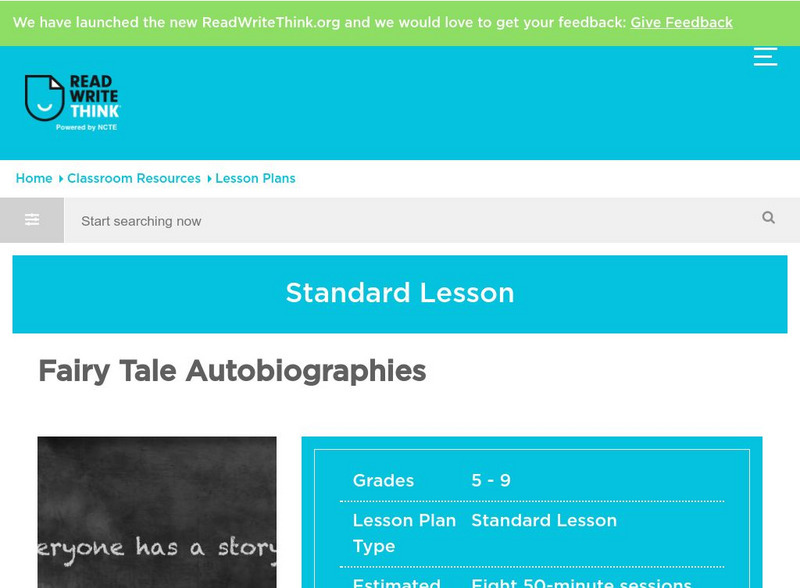


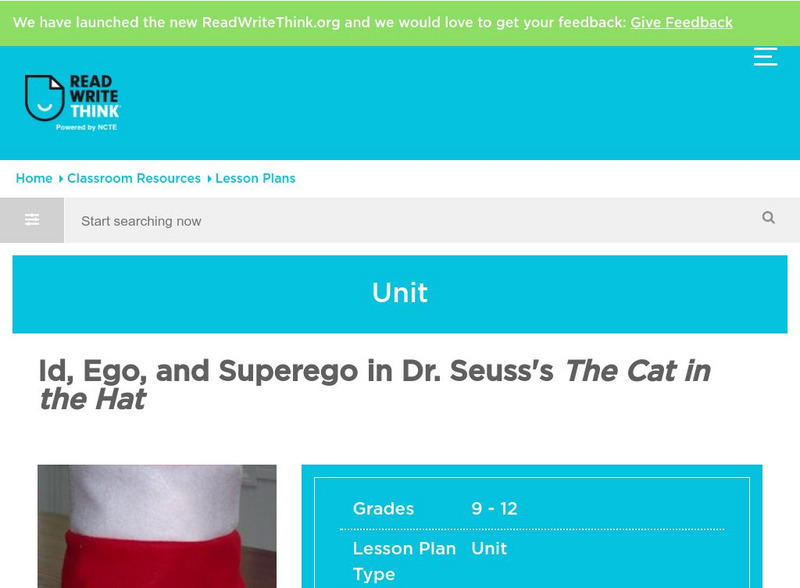
![Holt, Rinehart and Winston: Elements of Literature: Evaluating Character and Plot in Literature [Pdf] Graphic Holt, Rinehart and Winston: Elements of Literature: Evaluating Character and Plot in Literature [Pdf] Graphic](http://lessonplanet.com/content/resources/thumbnails/410148/large/bwluav9tywdpy2symdiwmduymc0yotyymi0xdjnoywrjlmpwzw.jpg?1589985608)

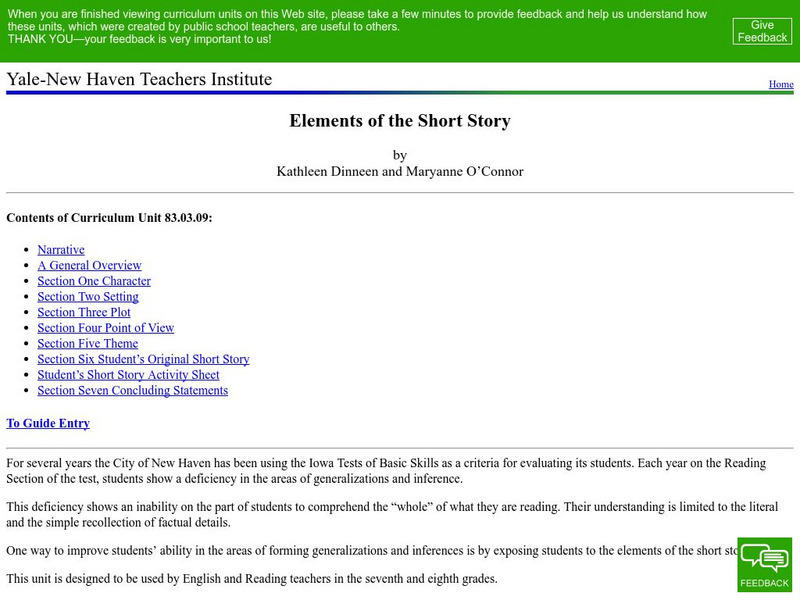

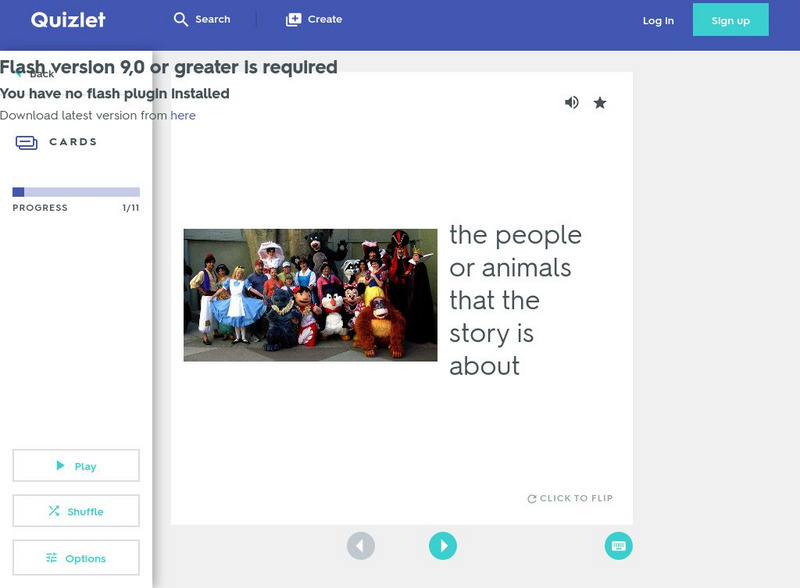

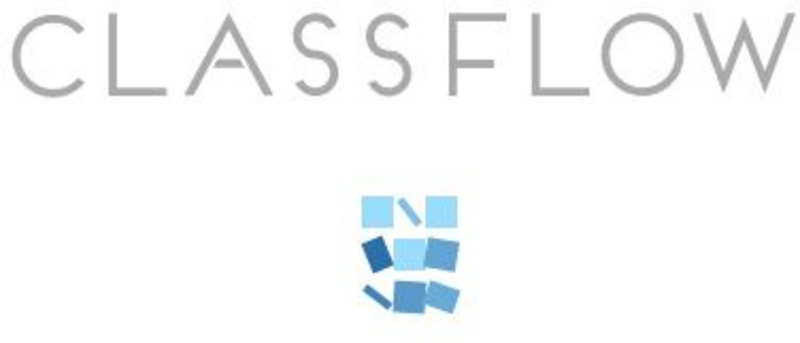


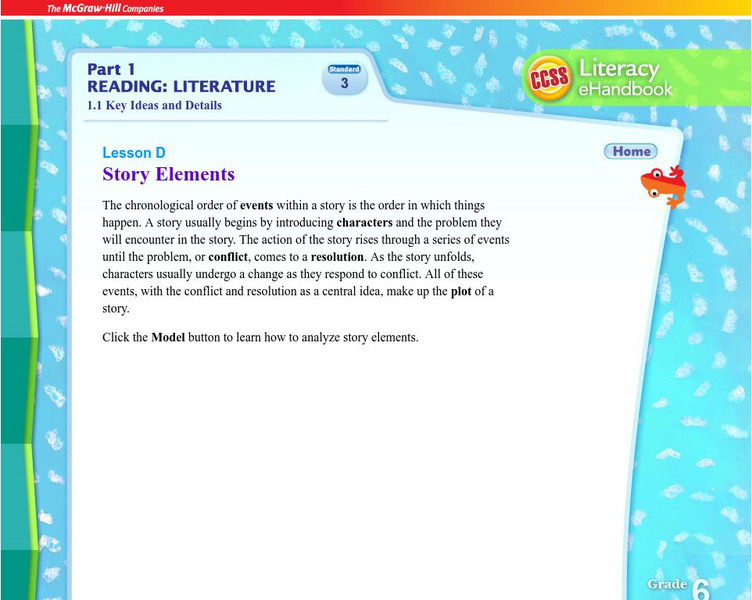
![Holt, Rinehart and Winston: Elements of Literature: Determining Methods of Characterization [Pdf] Graphic Holt, Rinehart and Winston: Elements of Literature: Determining Methods of Characterization [Pdf] Graphic](http://lessonplanet.com/content/resources/thumbnails/410109/large/bwluav9tywdpy2symdiwmduymc0ymjy4mc0xz3pvamf3lmpwzw.jpg?1589985471)





